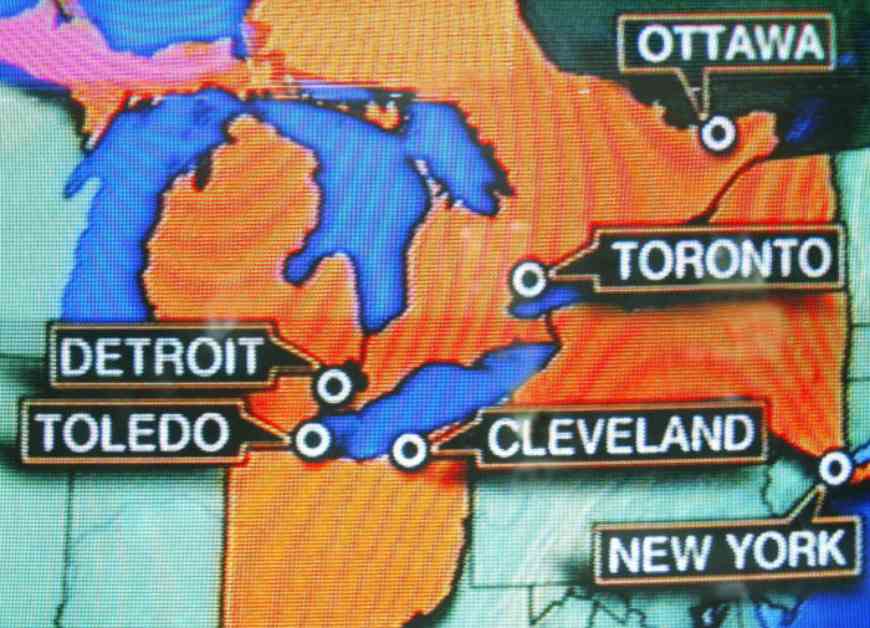Massive Blackout in Metro Detroit and Northeast: Looking Back at the 2003 Northeast Blackout
It was a day that started like any other summer day in Metro Detroit and the Northeast. However, in a matter of minutes, 50 million people found themselves plunged into darkness as a massive blackout swept across the region. This event, known as the 2003 Northeast Blackout, remains etched in the memories of those who experienced it firsthand.
The blackout was triggered by a seemingly minor incident—a tree branch in Ohio coming into contact with power lines. This seemingly innocuous event set off a chain reaction that spread across seven states and even reached into Canada. By 4:15 p.m. on August 14, 2003, millions of people were left without power, plunging them into a state of disarray and uncertainty.
Impact on Daily Life
The effects of the blackout were immediate and widespread. From Michigan to New England, people found themselves grappling with the sudden loss of essential services. Phone service became intermittent, homes and businesses were left in darkness, and the sweltering summer heat made living without air conditioning unbearable for many.
The blackout also had far-reaching consequences for critical infrastructure. More than 100 power plants were forced to shut down, leaving hospitals and prisons to rely on backup generators to maintain essential services. The disruption even extended to transportation, with Amtrak operations grinding to a halt between Detroit and Dearborn, Michigan, and Pontiac, Michigan.
In New York City, the blackout caused chaos and brought the bustling metropolis to a standstill. Flights were canceled, commuters were stranded, and residents were left to navigate a city plunged into darkness. The timing of the blackout, less than two years after the September 11 terrorist attacks, only served to heighten the sense of unease and vulnerability felt by many.
Recovery Efforts and Lasting Effects
While power was gradually restored for most within about a day, the 2003 blackout had lasting effects that lingered long after the lights came back on. The economic impact of the blackout was substantial, with hundreds of millions of dollars in damages incurred as a result of the widespread power outage.
Looking back on the events of that fateful day, it is clear that the 2003 Northeast Blackout serves as a stark reminder of the fragility of our interconnected power grid. It exposed vulnerabilities in our infrastructure and highlighted the need for greater preparedness and resilience in the face of unforeseen events.
Remembering the 2003 Blackout: Personal Accounts
As we reflect on the 2003 Northeast Blackout, it is important to consider the personal experiences and memories of those who lived through this historic event. Local journalists, such as Paula Tutman and Rod Meloni, shared their recollections of covering the blackout and witnessing its impact firsthand.
Paula Tutman, a reporter for Local 4, vividly recalled the moment she realized the magnitude of the blackout while preparing for a live shot on Woodward Avenue during the Dream Cruise. Initially dismissive of reports of street lights being out, Tutman soon realized the extent of the outage when she stepped outside and saw the entire avenue darkened.
Despite the challenges posed by the blackout, Tutman and her team persevered, providing live updates and coverage to a city grappling with the sudden loss of power. As she interacted with residents and businesses coping with the blackout, Tutman’s experiences underscored the resilience and resourcefulness of the community in the face of adversity.
Similarly, Rod Meloni, a reporter for Local 4, shared his memories of the chaotic aftermath of the blackout and the challenges of reporting on the unfolding events. From flying in a helicopter to survey the extent of the outage to witnessing the impact on communities across Metro Detroit, Meloni’s account offers a firsthand perspective on the widespread disruption caused by the blackout.
As we revisit these personal accounts and reflect on the events of the 2003 Northeast Blackout, it becomes clear that the legacy of this historic event continues to resonate with those who experienced it firsthand. The lessons learned from the blackout serve as a reminder of the importance of preparedness, resilience, and community solidarity in the face of unforeseen challenges.
Lessons Learned and Moving Forward
In the aftermath of the 2003 Northeast Blackout, efforts were made to strengthen and modernize the power grid to prevent a similar event from occurring in the future. Investments in infrastructure, technology, and emergency response capabilities have helped to enhance the resilience of the grid and minimize the risk of widespread outages.
However, as we look back on the events of the 2003 blackout, it is important to remain vigilant and proactive in addressing the potential vulnerabilities of our power system. Climate change, cyber threats, and other emerging risks pose new challenges to the reliability and security of our grid, underscoring the need for ongoing investments and preparedness measures.
As we commemorate the 21st anniversary of the 2003 Northeast Blackout, let us honor the memories of those who experienced the blackout and recognize the resilience and unity demonstrated by communities in the face of adversity. By learning from the lessons of the past and embracing a spirit of collaboration and innovation, we can build a more resilient and sustainable energy future for generations to come.






















